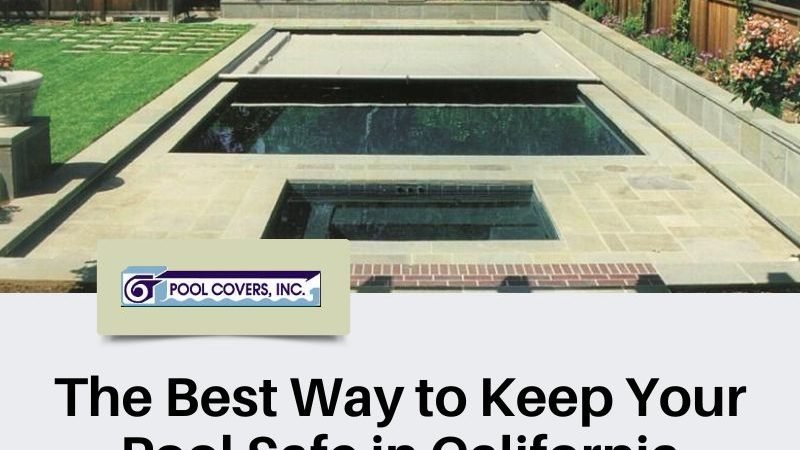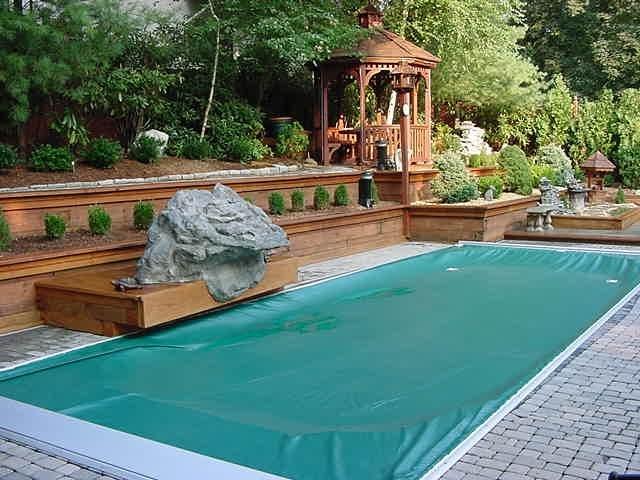
Pool safety is a critical concern, especially in sunny and pool-prevalent states such as California, where the climate and lifestyle allow ample swimming and water-based activities year-round. Pool safety’s importance can be understood by considering drowning prevention, water safety skills, supervision, pool barriers, safety equipment, emergency preparedness, and legislation and policies.
California is one of the states with the most pool drowning incidents. Drowning is one of the leading causes of injury-related deaths among children under the age of five. The data from the California Department of Developmental Services shows that:
- 32 children aged five or younger drowned in swimming pools in 2018. 23 more drowned in bodies of water other than swimming pools.
- 40 children drowned in pools during 2010. This marked the worst recent year on record.
- 33 children in the same age group drown in pools each year.
By presenting compelling statistics and making a strong case for the importance of effective safety measures, anyone can help raise awareness and advocate for policies and initiatives to reduce pool-related accidents in California.
Understanding California’s pool safety regulations
California has specific laws and regulations to ensure pool safety, which include:
- Enclosure – A barrier such as a fence or a wall that meets specific requirements, including height, gate construction, and the inability of younger children to climb over.
- Removable mesh fencing – Compliant with ASTM standards, along with a self-closing and self-latching gate that can be locked.
- Safety pool cover – It must comply with ASTM F1346-91 standards, be capable of holding significant weight, and prevent entrapment.
- Exit alarms – These are installed on doors that provide direct access to the pool area, sounding an alert when the door is opened.
- Self-closing and self-latching devices – For doors with direct access to the pool, placed at a certain height to prevent small children from reaching them.
- Pool alarms – The alarm sounds upon detecting accidental or unauthorized entrance into the water, compliant with ASTM Standard F2208.
- Other approved safety measures – Any other protection that offers an equal or greater level of safety as verified by approved testing laboratories.
Essential pool safety features
Pool Fencing
Types of pool fencing
- Mesh pool fencing offers high visibility, ease of installation and removal, and affordability.
- Glass pool fencing provides an elegant, modern look while offering a clear view of the pool area. It’s durable and resistant to weather, but it can be more expensive and requires regular cleaning to maintain its appearance.
- Aluminum pool fencing is sturdy, low-maintenance, and resistant to rust and corrosion. It offers a range of design options, from simple bars to more decorative styles, and can be a cost-effective choice.
- Wood pool fencing offers a natural and traditional aesthetic. It can be customized to match any landscape design. However, it requires more maintenance to protect against weather and termite damage.
- Vinyl (PVC) pool fencing is versatile, durable, and requires little maintenance. It can mimic the look of wood or other materials and is resistant to water and chemical damage.
- Wrought iron pool fencing is strong and durable and offers a classic, sophisticated look. It can be designed with decorative elements but is susceptible to rust if improperly maintained.
- Chain link pool fencing is cost-effective and durable despite lacking aesthetic points. It can be a practical choice for large areas but offers less privacy and security than other types.
- Removable pool fencing offers flexibility. They can be taken down and stored when unnecessary, making them convenient for many families and ideal for temporary or seasonal use.
The importance of self-closing and self-latching pool gates
When you have children or pets at home, installing self-closing and self-latching pool gates is recommended. They eliminate the risk of human error and prevent the need to close or lock the gate manually. Installing self-closing and self-latching gates is a wise decision for every home with a pool or hot tub.
Pool Covers
Types of pool covers
- Safety pool covers are designed to prevent accidental entry, especially by children and pets. They are strong enough to hold significant weight and typically come in mesh or solid materials.
- Solar pool covers are designed to retain heat, reduce heating costs, and extend the swimming season. They also help minimize water evaporation and can collect solar energy to warm the pool.
- Winter pool covers are used to protect the pool during the off-season. They are made from a tarp-like material designed to keep out debris, water, and sunlight, preventing algae growth and keeping the pool clean.
- Automatic pool covers are motor-driven covers that can be opened and closed with a button, providing convenience, safety, and energy efficiency. They can act as a safety cover, prevent debris from entering the pool, and help retain heat.
- Thermal pool covers are similar to solar covers but made from insulating material. However, they retain heat better than solar blankets and effectively reduce heating costs. They also minimize evaporation.
- Mesh pool covers are primarily used as safety covers or for winter protection. They allow water to pass through while keeping out debris. They are also lighter than solid covers, making them easier to handle.
The advantages of safety pool covers vs. traditional pool covers
- Safety – As the name suggests, the primary benefit of safety pool covers is their ability to prevent accidental drownings, particularly children and pets. They are designed to support a significant amount of weight, ensuring that if someone were to walk over the cover, they wouldn’t fall into the water. These are the advantages that traditional covers or tarps don’t have.
- Debris prevention – Like traditional covers, safety pool covers also keep debris, leaves, and dirt out of the pool, which helps maintain clean water and reduces the need for frequent cleaning.
- Water conservation – Safety pool covers help conserve water by preventing evaporation, which is beneficial in areas subject to water restrictions or for environmentally conscious homeowners.
- Energy efficiency – Like traditional pool covers, safety pool covers can help retain heat, reducing heating costs and energy use. This thermal retention also extends the swimming season for pool owners in cooler climates.
- Durability – Unlike most traditional pool covers, safety covers are typically made of durable materials, offering longer lifespans and better resistance to wear and tear.
Alarms
Types of pool alarms
Here’s an overview of the different types of pool alarms available and how each of them works:
- Surface wave detection alarms are installed on the pool’s edge and detect when waves are created by someone entering the pool. They are sensitive to surface movements and can alert you when a person or a pet falls into the water.
- Subsurface disturbance alarms are installed under the water and can detect disturbances below the surface. Pool owners generally consider these alarms more accurate than surface wave alarms because they are less likely to be triggered by wind or rain.
- Wristband alarms are wearable devices designed for children or pets. The alarm goes off if the wristband gets wet or submerged in water, alerting the caregiver immediately.
- Gate and door alarms are installed on the gate or door leading to the pool area. They sound when the gate or door is opened. They are an essential layer of protection to ensure children cannot access the pool area unsupervised.
- Pressure-sensitive safety mats are placed around the pool. They detect pressure when someone steps on them, triggering an alarm. They can be an effective deterrent, although they cover a limited area.
- Infrared motion detectors use infrared technology to detect motion near the pool area. They can be mounted to overlook the pool and will sound an alarm if someone moves within a predefined range.
- Floating alarms float on the pool’s surface, and sensors are used to detect wave activity, indicating a possible water entry. Some models combine surface wave detection and subsurface disturbance detection for improved accuracy.
Maintenance and Regular Safety Checks
_LOGO.jpg)
The importance of regular pool maintenance in ensuring safety
- Maintaining water quality
- Accident prevention
- Equipment functionality
- Water clarity
- Compliance with health regulations
- Extended pool lifespan
Checklist for a monthly safety audit of your pool area
A monthly safety audit of a pool area is essential to ensure the safety and well-being of all pool users. Below is an example checklist that can be used to conduct a thorough inspection. When creating or using a checklist, local regulations and guidelines should also be considered.
Monthly pool area safety audit checklist:
1. General pool area safety
- Pool barriers and fences are intact, secure, and meet local height requirements.
- Gates/doors leading to the pool area are self-closing and self-latching.
- Signage displayed, including pool rules, no diving signs (if applicable), and emergency contact information.
- The pool deck is free of trip hazards and in good repair.
- Adequate lighting around the pool area for evening use.
- Emergency equipment (lifebuoys, reaching poles) is accessible and in good condition.
- The first aid kit is fully stocked and easily accessible.
2. Pool water quality
- pH levels are within the recommended range (typically 7.2 – 7.8).
- Chlorine/bromine levels are within the recommended range to ensure proper sanitation.
- The water is clear and free of debris, and the bottom of the pool is visible.
- There are no signs of algae growth on pool surfaces.
- Pool filtration and circulation systems are operating efficiently.
- Skimmer baskets are clean and free of debris.
3. Pool equipment and furniture
- The pool ladder and steps are secure and in good condition.
- The diving board (if applicable) is secure and in good condition.
- Pool covers are intact and free of tears or damage.
- Deck furniture is stable and in good repair.
- Storage areas for chemicals are locked and secure, away from children’s reach.
- Chemicals are stored according to the manufacturer’s instructions to prevent mixing or leaks.
4. Safety and supervision
- Posted rules include supervision requirements (e.g., children must be accompanied by an adult).
- Availability of a phone or other communication device for emergencies.
- Staff (if applicable) are trained in CPR and pool rescue techniques.
5. Documentation and records
- Maintenance and repair records are up to date.
- Water quality testing logs are current and show consistent testing.
- Incident reports (if any) from the previous month are reviewed for potential safety improvements.
6. Additional considerations
- Review any recent incidents or near-misses for lessons learned and preventive measures.
- Ensure accessibility features (e.g., pool lifts) are operational for individuals with disabilities.
- Inspect and test pool alarms if installed.
Safe Swimming Practices
The importance of adult supervision in preventing accidents and establishing pool rules
The role of adult supervision in avoiding accidents and establishing rules for pool use is crucial for several reasons:
1. Prevention of drowning and accidents:
- Adult supervision is the primary line of defense against drowning, the leading cause of injury-related death in children. Supervisors can react quickly to emergencies, preventing accidents or reducing their severity.
- Active supervision means being within arm’s reach of younger swimmers and maintaining constant visual contact with older ones, significantly reducing the risk of drowning.
2. Establishing and enforcing pool rules:
- Adults are responsible for establishing clear, consistent rules for pool use to ensure safety. These rules include no running, no diving in shallow areas, and swimming only with a buddy.
- Enforcing these rules consistently helps children understand the importance of safety measures and encourages responsible behavior around water.
3. Education and awareness:
- Adults can educate children about the hazards in and around water, teaching them to recognize dangerous situations. This includes understanding the risks of swimming without supervision, wearing life jackets, and recognizing when someone else is in trouble.
- Providing formal swimming lessons and water safety education under adult supervision can significantly reduce the risk of drowning.
4. Emergency preparedness:
- Adult supervisors should be prepared for emergencies, which includes knowing how to perform CPR, having a phone nearby to call for help, and having rescue equipment like life rings or reaching poles accessible.
- Being prepared and knowledgeable about what to do in an emergency can save precious minutes and is critical to prevent fatal outcomes.
5. Modeling safe behavior:
- Adults serve as role models for safe behavior around water. By demonstrating safe practices, such as not swimming alone, avoiding alcohol while supervising children, and wearing life jackets, adults set a standard for children to follow.
Swimming Lessons
Encouraging swimming lessons for all family members is a significant and effective approach to improving water safety skills within a household. Swimming lessons can help equip individuals with essential and life-saving skills, promote water safety awareness, build their confidence in the water, prepare them for emergencies, and encourage them to be more active, leading to a healthy lifestyle.
Enrolling in certified swimming programs that cater to various age groups and skill levels is recommended. These programs should be led by qualified instructors who can provide personalized attention and ensure that each family member achieves water competency. Additionally, reinforcing these skills through regular practice and promoting a culture of safety around water within the family are keys to maintaining and enhancing water safety.
Emergency Preparedness
Having a plan in place for pool emergencies, including CPR training and accessible life-saving equipment, is crucial for several reasons:
- Immediate response to emergencies
- Drowning prevention
- Reducing the severity of injuries
- Legal and liability considerations
- Promoting safety awareness
- Community confidence
- Compliance with regulations
Advanced Safety Technologies

Overview
New pool safety technologies focus on enhancing the safety of children and pets around water bodies, incorporating innovative features to prevent accidents.
- Wearable alarms are designed for children and pets. These wearables are attached to the wrist or collar and trigger an audio-visual alarm at the receiver when submerged in water. They are particularly useful for monitoring multiple individuals or pets simultaneously, as a single receiver can pair with over 25 transmitters.
- Gate and window alarms offer weatherproof solutions for outdoor gates, doors, and windows near pool areas. These alarms sound a loud alert when unauthorized access is detected, providing an additional layer of security around the pool perimeter.
- Underwater motion detectors use underwater motion sensors to detect entries into the water, minimizing false alarms caused by wind or rain. These alarms provide dual protection with poolside and in-home sirens to ensure immediate alerting.
- Personal detectors usually feature a wristband that triggers an alarm when submerged. This system is straightforward to set up and is designed for both child and pet safety.
- Floating sensors use motion sensors to detect when a child or pet falls in. These devices can be controlled via a smartphone app, allowing for adjustments in sensitivity and alert settings. They’re particularly convenient for portability and use in different settings.
The Benefits and Limitations of Relying on New Pool Safety Technologies
Adopting new pool safety technologies offers a variety of benefits and some limitations, aiming to enhance safety and prevent accidents in swimming pools. Here’s a breakdown of these aspects:
Benefits:
- Enhanced monitoring and detection
- Automated alerts
- Increased accessibility
- Data collection and analysis
- Peace of mind
Limitations:
- Cost
- Overreliance
- Privacy concerns
- Complexity and user error
- Adaptability and inclusiveness
While new pool safety technologies offer significant benefits in preventing drowning and enhancing safety, they are not without their limitations. A balanced approach that combines technology with human vigilance and traditional safety measures is essential for creating the safest possible swimming environments.
Conclusion
Drowning is a leading cause of injury-related deaths among children, especially those under the age of four. In areas with many pools, like California, the risk of such accidents increases if proper safety measures are not in place. Implementing layers of protection, including supervision, barriers (like pool fencing), and water safety education, can significantly reduce these incidents.
A multi-layered approach to pool safety is crucial for preventing accidents and ensuring the well-being of individuals, particularly children, who are at high risk of drowning. By installing physical barriers on and around the pool, promoting safe pool practices, and building a culture of pool safety within the community that fosters collective responsibility and awareness, we create a comprehensive approach to pool safety that addresses the physical and behavioral aspects of risk prevention.
While no single measure can guarantee complete safety, integrating multiple strategies reduces the likelihood of accidents and enhances overall pool safety standards within communities.
Encouraging pool owners to review and update their safety measures regularly is essential for protecting families and communities. Strategies such as educational campaigns, local workshops and seminars, partnering with local authorities, using social media, and access to resources and information can help raise awareness among pool owners and encourage them to prioritize the safety of their families and communities.
If you have other ideas about pool safety and suggestions we haven’t covered here, please contact us at Pool Covers, Inc. Call us at 707-864-6674 or message us at customerservice@poolcoversinc.com.
Pool Covers, Inc. has provided pool and spa cover advice, services, and sales to customers in Northern California for over 40 years. We are always glad to help!









